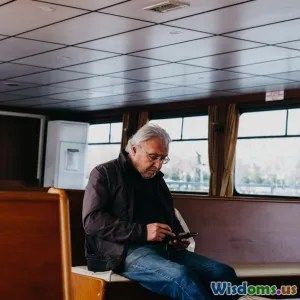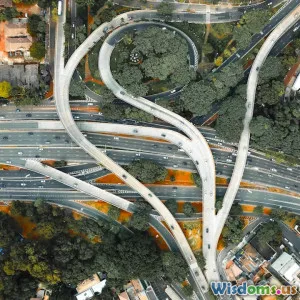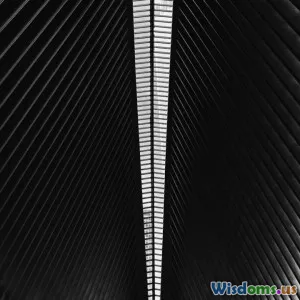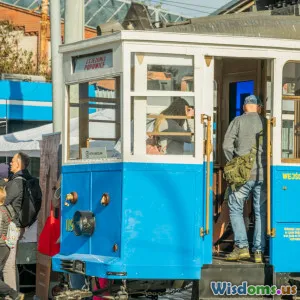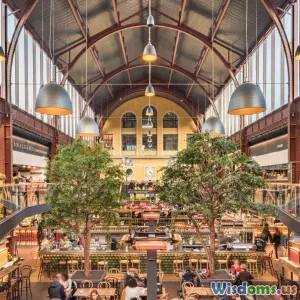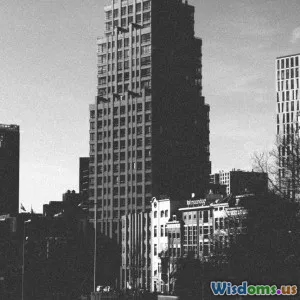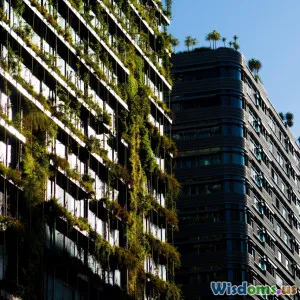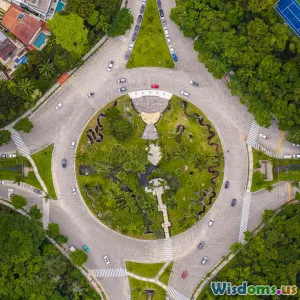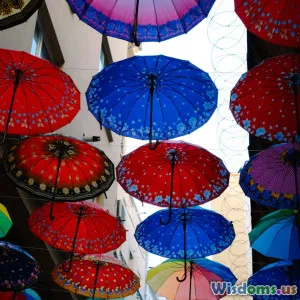
How Public Spaces Can Become Smart and Sustainable
8 min read Explore how public spaces can evolve into smart and sustainable areas to enhance urban living. (0 Reviews)
How Public Spaces Can Become Smart and Sustainable
Public spaces are at the heart of urban life, serving as places for social interaction, leisure, and community engagement. As cities become increasingly crowded and ecological challenges mount, there is a growing imperative to make these spaces not only smarter but also more sustainable. This article delves into how urban planners and architects are embracing innovative technologies and sustainable practices to redefine public spaces for the future.
The Necessity for Smart and Sustainable Public Spaces
Urbanization is surging—more than 55% of the world’s population currently resides in cities, and this is expected to rise to 68% by 2050 (source: UN). Public spaces contribute significantly to urban ecosystems, but many of them are underutilized and struggle with issues like pollution, traffic congestion, and ineffective waste management. Addressing these challenges requires rethinking how we design and manage our public spaces to foster improved well-being and environmental responsibility.
The Concept of Smart Urban Spaces
Smart public spaces utilize technology to enhance urban living. By integrating digital systems and smart technologies, these areas can improve accessibility, safety, and user experience. For instance, smart lighting systems adjust brightness based on the time of day or movement, enhancing energy efficiency. The Barcelona Smart Lighting project is a prime example, with more than 25,000 LED lights equipped with sensors, cutting energy costs by approximately 30%.
Real-Time Data Utilization
Cities like San Francisco have implemented sensors that monitor air quality, noise levels, and foot traffic in real-time. This data helps urban planners make informed decisions about public health measures and transportation planning, ensuring that public spaces remain vibrant and conducive to community life.
Sustainable Approaches to Public Spaces
Sustainability in public spaces is achieved through eco-friendly design, efficient resource management, and the promotion of green technologies. From green roofs to permeable pavements, these elements contribute to both environmental sustainability and aesthetic value.
Green Infrastructure
Investing in green infrastructure is crucial. For instance, the High Line in New York City is a repurposed elevated railway that has successfully integrated plant life into an urban environment, creating green pathways while combating urban heat effects. This use of natural elements not only absorbs rainwater and reduces runoff but also provides habitats for urban wildlife.
Eco-Friendly Materials
Using recycled or sustainable materials when constructing urban spaces reduces the environmental footprint. The Lucy Blackman Project in Tokyo illustrates this transformation, opting for recycled plastics and locally sourced materials to minimize transportation emissions.
Community Engagement in Smart Design
Public spaces must resonate with the needs and preferences of their communities. Employing a user-centered design approach ensures that these areas serve practical functions and cater to the community’s cultural and recreational needs.
Participatory Design Methods
Cities like Melbourne have launched participatory design initiatives where local residents can express their preferences for urban development. By engaging with stakeholders through forums, surveys, and workshops, cities can create spaces that are genuinely reflective of community aspirations.
Enhancing Accessibility
Smart public spaces should be accessible to everyone—this includes integrating features such as clear signage, seating areas, pedestrian pathways, and facilities for people with disabilities. The 10th Avenue Promenade in New York exemplifies inclusive design, featuring ample seating, shaded areas, and artworks that invite all community members to engage with the space.
Technological Innovations Shaping Tomorrow’s Public Spaces
Technological advancements are pivotal in the evolution of public spaces. From virtual reality to augmented systems, these innovations can facilitate a new level of interactivity and engagement.
Smart Transportation Solutions
By integrating technology into transportation systems, cities can improve traffic flow and enhance connectivity among different regions. Systems like Mobility as a Service (MaaS) that incorporate ride-sharing apps, public transport routes, and bike-sharing programs support smoother transitions between modes of transport. Helsinki stands at the forefront of this transition, promoting innovative mobility services that improve access to public spaces.
Digital Art and Information Nodes
Interactive digital installations can enhance public spaces by providing artistic displays while simultaneously offering real-time information, such as public transit schedules or community announcements. For instance, Kitchener, Ontario has launched an interactive digital screen in its downtown area that offers entertainment, cultural information, and wayfinding for visitors and locals alike.
Case Studies of Smart and Sustainable Public Spaces
Looking at established examples can inspire future projects tailored to local needs while embracing smart, sustainable practices.
The Bosco Verticale, Milan
The Bosco Verticale (Vertical Forest) towers are residential buildings that incorporate over 9,000 trees and 20,000 shrubs, effectively enhancing biodiversity and improving air quality. This pioneering concept provides a habitat for local wildlife and connects residents to nature—all while efficiently managing energy consumption.
The 606 Trail, Chicago
The 606 is an elevated park that repurposed an old railway track. It connects neighborhoods, reduces urban heat, and invites community interaction through walking and biking paths. This transformation showcases how repurposing existing elements can create vibrant public spaces with sustainable practices.
Conclusion
As cities navigate the complexities of urban living and ecological sustainability, the transition to smart and sustainable public spaces is essential. Combining cutting-edge technology with environmentally responsible design will not only preserve the vibrancy of our urban landscapes but also enhance the quality of life for all residents. By focusing on inclusivity and community engagement, urban planners and architects can ensure that public spaces evolve into interactive, dynamic hubs of sustainability and connectivity. Each city has the potential to craft these experiences uniquely, but the overarching aspirations remain clear: to create smarter, greener, and more inclusive public spaces for generations to come.
Engaging with these public spaces is no longer simply a passive experience; it’s a dynamic relationship that encourages active participation in the ongoing narrative of a thriving urban future.
Rate the Post
User Reviews
Popular Posts










